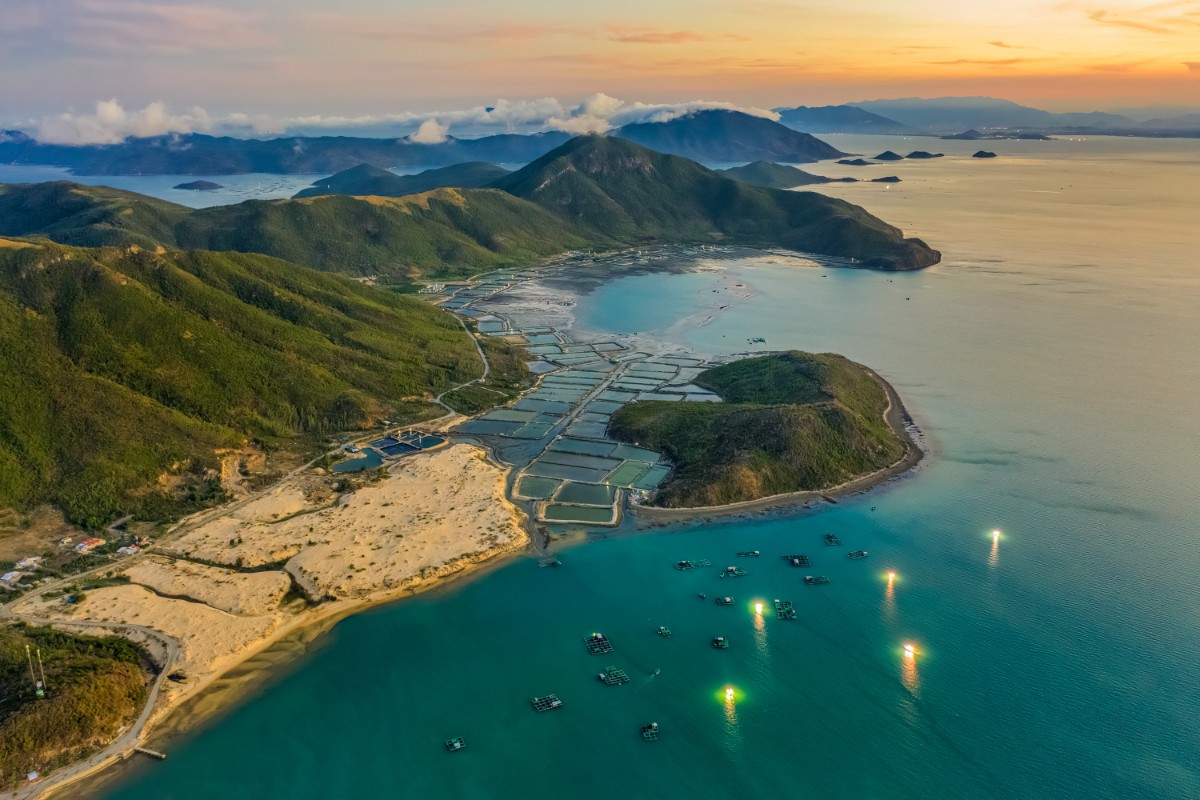
After three decades of strong growth, Vietnam stands at a pivotal moment. As global volatility increases and domestic challenges mount - from weak R&D investment to a shortage of skilled talent - the country must decide whether to upgrade its growth model or risk long-term stagnation.
Dr Phan Hoang Diep, Research Fellow in Smart and Sustainable Development at RMIT Vietnam, shares his perspective on how Vietnam can avoid the middle-income trap - drawing on lessons from history, international comparisons, and the country’s own development reality.
Vietnam stands at a pivotal moment in its development journey. It boasts stable economic growth, robust exports, and one of the highest trade-to-GDP ratios in the world. The country is deepening its global integration, joining advanced manufacturing supply chains, and signalling ambitions to master frontier technologies such as 5G, artificial intelligence, renewable energy, and semiconductors.
 Dr Phan Hoang Diep argues that Vietnam’s rapid growth must now be matched by bold structural reforms to avoid falling into the middle-income trap. (Photo: RMIT)
Dr Phan Hoang Diep argues that Vietnam’s rapid growth must now be matched by bold structural reforms to avoid falling into the middle-income trap. (Photo: RMIT)
But alongside these opportunities lie pressing challenges: outdated infrastructure, high-tech talent shortage, rapid population ageing, and the turbulence of global trade realignments. It is against this backdrop that a key concern is being raised more frequently: Is Vietnam approaching the middle-income trap?
Coined by the World Bank in 2006, the “middle-income trap” term refers to countries that experience a period of rapid growth but then stagnate before reaching high-income status. The numbers are sobering. Of the 101 economies that achieved middle-income status in 1960, only 13 transitioned into the high-income group by 2008. By 2023, with the global population exceeding eight billion, only around 1.4 billion people lived in high-income countries.
There is no shortage of examples. Dr Diep’s estimates based on World Bank data show that Malaysia once recorded average annual GDP growth of 7.4 percent from 1961 to 1996, but this fell to 4.4 percent in the following decades. Thailand ’s average annual growth fell from 7.5 percent during 1960–1996 to around 5 percent in 1999–2005, and just 2 percent between 2021 and 2023, amid structural challenges and global headwinds. Brazil, despite strong performance from 1965 to 1980, saw almost no gains in per capita income in the three decades that followed, largely due to its failure to move up the value chain and foster innovation.
These countries didn’t stop developing - they simply failed to transform. Economic models built on cheap labour, resource extraction or low-end manufacturing eventually lose steam as costs rise. Without strong investment in innovation and knowledge-based industries, growth slows. The inability to generate higher-value production and services becomes a barrier to further advancement.
According to Dr Diep, falling into the middle-income trap is rarely the result of a sudden shock. More often, it’s the outcome of structural limitations in a country’s development model. In the early stages of growth, physical capital - investment in factories, infrastructure, and resource exploitation - can generate fast results. But when these inputs begin to yield diminishing returns, further breakthroughs require a shift towards knowledge, technology, and institutional reform.
 Vietnam’s investment in R&D and human capital remains low compared to regional and global peers, raising concerns about long-term competitiveness. (Photo: Hanoi Photography - stock.adobe.com)
Vietnam’s investment in R&D and human capital remains low compared to regional and global peers, raising concerns about long-term competitiveness. (Photo: Hanoi Photography - stock.adobe.com)
Vietnam is beginning to show warning signs. In 2021, Vietnam’s spending on research and development (R&D) was just 0.42 percent of GDP - well below countries like South Korea (4.91 percent), the United States (3.48 percent), and Japan (3.28 percent). It was also lower than regional peers such as Singapore (2.16 percent in 2020) and Thailand (1.33 percent in 2020). Even compared to the average of lower-middle-income countries (0.55 percent in 2019), Vietnam lags behind.
At the same time, according to Dr Diep’s estimates based on World Bank data, Vietnam’s per capita GDP remains stagnant relative to more advanced economies. As of 2023, it was only 11 percent of South Korea’s, 10 percent of Japan’s, and 6 percent of Singapore’s - little changed from the early 1990s. Alarmingly, Vietnam’s per capita income stood at 76 percent of China’s in 1989 but had dropped to just 31 percent by 2023. While Vietnam has outpaced some regional neighbours such as India, Indonesia, and the Philippines, the pace of improvement remains modest.
Another major challenge is workforce quality. While the average years of schooling have increased, practical skills have not kept pace with the needs of a digital economy. Talent is often misallocated - many capable individuals choose secure public sector jobs over riskier paths such as scientific research or tech entrepreneurship, due to low incentives and support. Coupled with inadequate digital infrastructure, limited access to capital for innovation, and widening income inequality, Vietnam’s risk of stagnation is very real.
What will it take for Vietnam to break through? According to Dr Diep, the priority must be a long-term strategy grounded in transformative pillars - especially targeted technology specialisation. Vietnam must concentrate its limited resources on 1–2 strategic tech sectors that offer the potential for global competitiveness. Countries like South Korea (semiconductors), Japan (automobiles) and China (electric vehicles) all began their rise by specialising in one or two high-tech sectors aligned with their comparative advantages.
 To break through, Vietnam must leverage its geographic advantages and invest in strategic sectors like maritime trade and high-tech innovation, says Dr Diep. (Photo: Hien Phung - stock.adobe.com)
To break through, Vietnam must leverage its geographic advantages and invest in strategic sectors like maritime trade and high-tech innovation, says Dr Diep. (Photo: Hien Phung - stock.adobe.com)
This approach aligns with David Ricardo’s theory of comparative advantage - a foundation of modern economics - which holds that countries should specialise in sectors where they are relatively more efficient. For Vietnam, identifying and scaling these strengths could unlock significant gains in productivity, trade, and long-term growth.
Technology, however, must be complemented by smart use of Vietnam’s geographic and natural advantages. Situated on one of the busiest maritime routes in the Asia-Pacific, Vietnam has the potential to become a regional trade hub - if it invests in deep-water ports like Van Phong and upgrades its logistics infrastructure.
Dr Diep notes that Singapore, despite its small land area, has built much of its wealth and global influence as a maritime hub with its port handling 41.12 million TEUs in 2024 and contributing 7 percent to GDP. In contrast, Vietnam has a strategic 3,260-kilometre coastline and direct access to key international shipping routes. With focused investment in ports like Van Phong and better logistics coordination, maritime trade could become a major driver of Vietnam’s economic transformation and global competitiveness.
Less-discussed industries, like medicinal herbs, could also be long-term strategic assets. Vietnam imports over 90 percent of its pharmaceutical ingredients, even though the Central Highlands and Northwest offer ideal conditions for cultivating high-value herbal crops with strong export potential.
Crucially, transformation won’t happen without a complete rethink of higher education and innovation systems. Vietnam must move beyond mass enrolment to prioritise elite research universities, link academic research with industry, and support the development of young scientists and entrepreneurs. A thriving innovation ecosystem requires more than private initiative - it also needs a responsive state. A national venture capital fund, faster patent protections, and capital markets accessible to tech start-ups are essential to move from vision to reality.
“Innovation, without strong foundations, risks becoming little more than a slogan. Vietnam now faces a defining choice: to cling to an old growth model built on cheap labour and capital, or to leap into the future by investing boldly in people, knowledge and technology. History reminds us that even countries starting from a lower base can rise - but only if they have the courage to act. Knowing the right path is not enough. The real test is having the will to walk it to the end,” Dr Diep said.
Story: Quan Dinh H.
Masthead image: Hien Phung - stock.adobe.com
Thumbnail image: Jacek Wojnarowski - stock.adobe.com
As Vietnam’s Law on Atomic Energy takes effect on 1 January 2026, nuclear power is back in the spotlight as a strategic pillar for energy security and carbon neutrality.
AI discussions have predominantly focused on technical outcomes like productivity, task performance, and error reduction. However, a deeper exploration of the emotional and psychological impact is essential.
A study has revealed a growing gender divide in Vietnam’s anaemia burden, with rates rising among women while steadily declining among men.
Vietnam’s ports face rising pressure to cut emissions. New research from RMIT reveals the risks, gaps, and cooperation needed for a credible, sustainable transition.